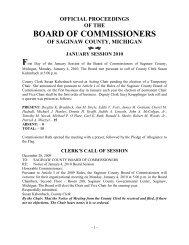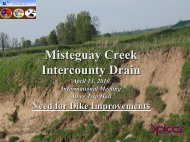The Metropolitan Transportation Planning ... - Saginaw County
The Metropolitan Transportation Planning ... - Saginaw County
The Metropolitan Transportation Planning ... - Saginaw County
Create successful ePaper yourself
Turn your PDF publications into a flip-book with our unique Google optimized e-Paper software.
<strong>The</strong> <strong>Metropolitan</strong> <strong>Transportation</strong> <strong>Planning</strong> Process: Key Issues<br />
TRANSPORTATION DEMAND MANAGEMENT (TDM)<br />
What is TDM?<br />
In its broadest sense, TDM is any action or set of actions designed to influence the<br />
intensity, timing, and distribution of transportation demand, in order to reduce<br />
traffic congestion or enhance mobility.<br />
Such actions can include offering commuters alternative transportation modes<br />
and/or services, providing incentives to travel on these modes or at non-congested<br />
hours, providing opportunities to link or "chain" trips together, and/or incorporating<br />
growth management or traffic impact policies into local development decisions.<br />
What is the role of the MPO in encouraging the use of TDM actions?<br />
<strong>Transportation</strong> demand management strategies are part of the toolbox of actions<br />
available to transportation planners for solving transportation problems. As such,<br />
MPOs should make sure that TDM actions are considered in the planning process.<br />
In areas where congestion management systems are required (populations greater<br />
than 200,000), TDM actions are among the strategies that can reduce congestion<br />
or enhance mobility.<br />
What is the likely impact of TDM actions on transportation system<br />
performance?<br />
Available evidence suggests that well-conceived and aggressively promoted<br />
demand reduction programs can decrease peak period traffic by as much as 10<br />
to 15 percent. In fact, significantly higher demand reduction levels have been<br />
achieved at several employment sites.<br />
Demand reduction efforts, however, unless undertaken on a truly massive scale,<br />
can have only a local impact. <strong>The</strong>y can relieve spot congestion -- for example, at<br />
entrances and exits to large employment centers -- but they cannot appreciably<br />
reduce traffic on freeways and major arterials.<br />
<strong>The</strong> only exception to this seems to be areawide road pricing practices, such as<br />
tolls and "hot lanes," that (at least as modeled) appear to have significant influence<br />
on travel demand.<br />
Studies have shown that employer support for ride sharing, use of financial<br />
incentives to shift travel to alternative modes, restricting the number and use of<br />
parking spaces, and charging higher prices for parking are important supporting<br />
strategies for changing traveler behavior.<br />
Additional sources of information:<br />
A Toolbox for Alleviating Traffic Congestion and Enhancing Mobility. Institute of<br />
<strong>Transportation</strong> Engineers: Washington, D.C., 1997.<br />


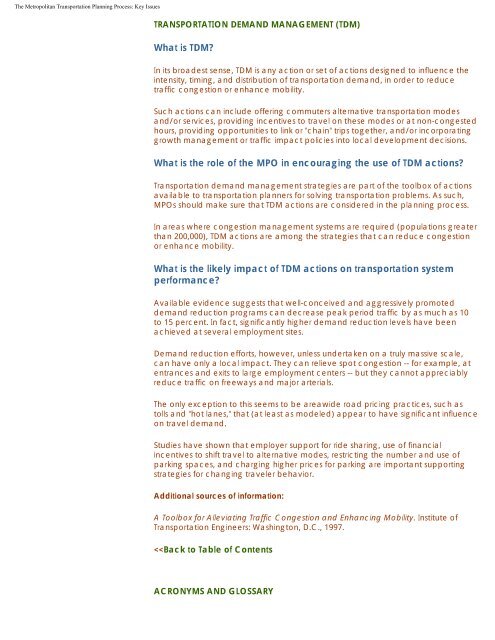
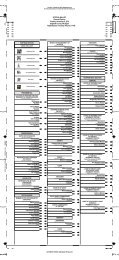
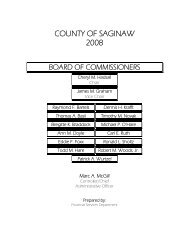
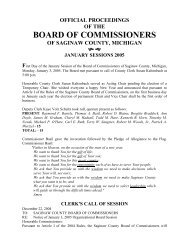
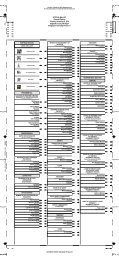

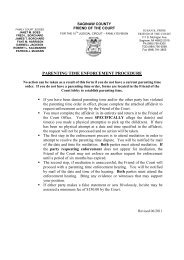
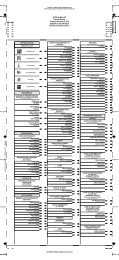


![[ Of Commissioners] - Saginaw County](https://img.yumpu.com/25951211/1/190x245/-of-commissioners-saginaw-county.jpg?quality=85)


